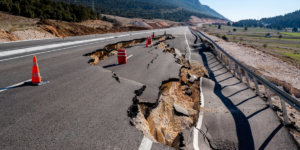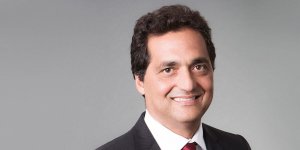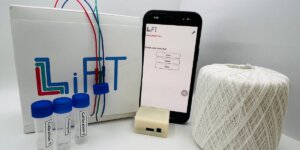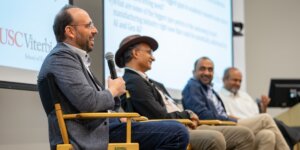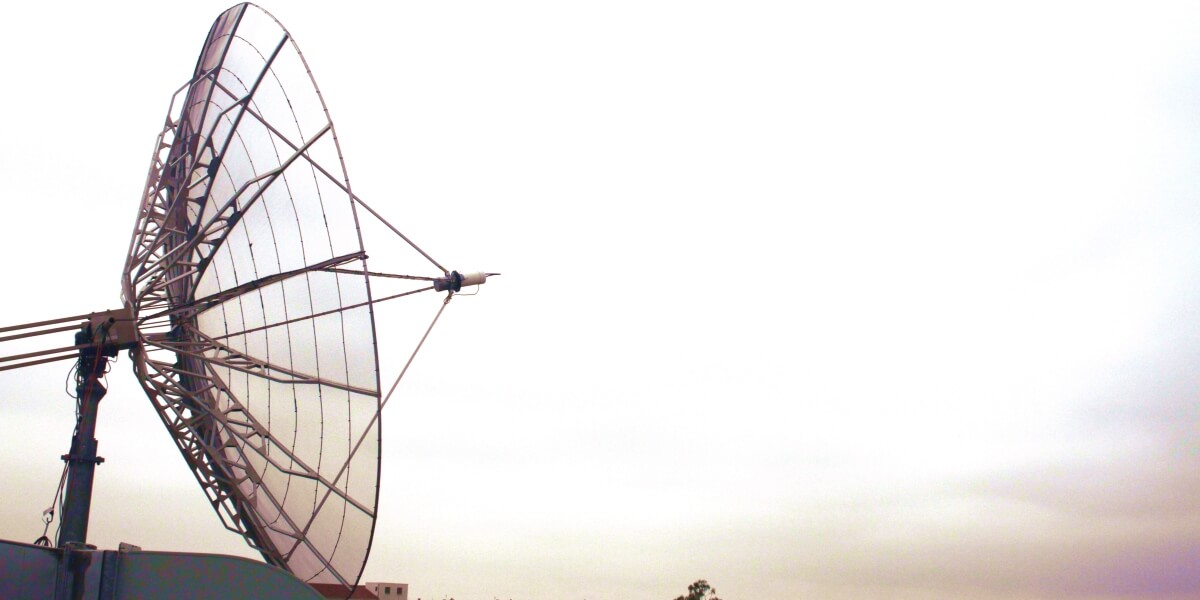
ASTE 599 included training students to use large equipment, such as pointing this 4.5 meter radius parabolic dish mesh antenna on top of ACB. Photo by Alya Rehman
In a dimly lit room, monitors connected by thick coaxial cables display satellite frequencies and location tracking linked up to a parabolic mesh dish that sits at the top of a tower.
Judging from the inside, you’d think this was somewhere in the labyrinthine buildings of NASA, but it’s actually USC’s own Olin Hall of Engineering and the Ahmanson Center. The satellite stations and dish are a part of a new hands-on course in the Department of Astronautical Engineering. Designed to teach students ground communication systems and architecture for satellite operations, the graduate level course is the brainchild of Professor David Barnhart.
During the Spring 2017 semester, ten graduate students used USC’s newly-installed parabolic mesh dish antenna and station to learn how to track satellites and collect data from them. Some of these skills included orbital mechanics for ground tracking, calculating link budgets and margins, spectrum analysis and RF component hardware handling, ground antenna architecture, coupled with specialized training in other communication-specific software.
These skills are typically used to communicate with spaceships and the International Space Station, but are also applicable to meteorology data collection, among others.
“It’s exactly what we want these students to walk away with,” Barnhart said. “A real-life simulated environment and a level of knowledge and skill that is directly applicable to their field.”
Barnhart credits Dean Yannis C. Yortsos and the late John O’Brien, executive vice dean, with acquiring the necessary standard equipment within the station and the dish installed on top of the Ahmanson Center to jumpstart the new course.
Extra improvements were also installed with the help of USC Viterbi alumnus and NovaWurks systems engineer, Alex Shim, throughout the year.

Students also worked with spectrum analyzers to track data reception from the dish antenna. Courtesy of Dave Barnhart
After 10 intensive weeks of study and practice, the class was separated into teams of two, each tasked with a set of four clues that they would then have to decipher to uncover the identity of a specific currently-running satellite and track its frequency over a period of time.
“The clues were both literal and figurative,” Barnhart said.
They ranged from obscure single words such as “water” to dates of launch, changes of ownership, purpose, technical features, and other notable historical knowledge. Teams worked through literature and data records of the satellite’s features that matched these attributes to find the right one.
After identifying a prospective satellite, students had to track that satellite across an extended period of time and make notes about their findings on frequency with help from Barnhart’s teaching assistant for the course, Kevin Chou.
“One of the difficulties that we faced was the fact that satellites did not exactly follow our class schedule at USC,” Barnhart said.
Students had to set up their stations as early as 8 a.m. to as late as midnight trying to catch the signal, as most of these satellites transmitted to stations in Fairfax, Alaska or Canada, then stopped transmission as soon as they orbited out of range, which at times was at the cusp of when the craft was just entering or just exiting USC’s dish reception range. Despite the difficulty, the teams were successful, each identifying their assigned satellite — with a few hiccups, but relatively unscathed in the process.
After five weeks of research and data collection, the teams delivered their findings to a panel of industry professionals and astronautics faculty.
“We even set up our own makeshift station at my house.” said Joe Farrier, an astronautical engineering graduate student, as he displayed a photo of a pieced together monitor and antenna pointed to the sky in his backyard.
Barnhart plans to teach the course again in Spring 2018 to a larger class of 14 to 16 students.
“I am implementing a number of changes to the class,” said Barnhart, “most notably adding a UHF/VHF antenna for operations which will double the number of satellites they can see and track.”
Barnhart also wants to increase the control room ability to track two different satellites at once in addition to adding more sophisticated equipment and bringing in more industry professionals to participate in the class.
Published on June 27th, 2017
Last updated on October 8th, 2024




